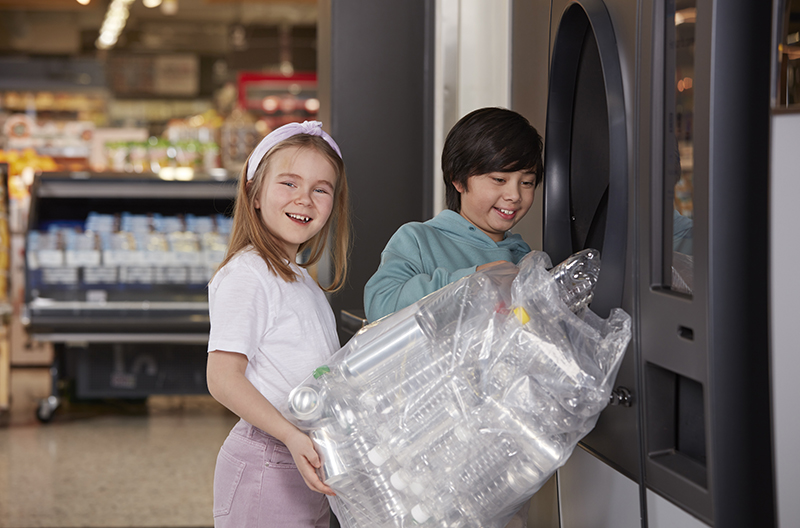New research has been released on consumers’ shopping preferences and attitudes around drink container recycling. The report “How recycling habits impact shopping behavior” has been published by Shelton, Connecticut-based TOMRA, a global producer of “reverse vending” technology that allow people to return their empty drink cans and bottles for recycling.
Reverse vending machines are used in regions and states that have deposit return systems, also known as “bottle bills,” where consumers pay a small deposit on top of the price of their drink, which is refunded to them when they return the empty drink containers for recycling. Reverse vending machines are often located in supermarkets and grocery stores, where consumers can use their deposit refund as in-store credit toward their shopping.
In the U.S. in 2021, 19 states filed legislation to either update or adopt a deposit return system. Bottle bills are in place in California, Connecticut, Hawaii, Iowa, Maine, Massachusetts, Michigan, New York, Oregon and Vermont.
“Globally, more than 1.4 trillion drink containers are sold each year, and 1 million plastic bottles are bought every minute,” said Charles Riegle, SVP of public affairs at TOMRA Collection in the U.S.
“Plastic drink containers are highly recyclable, but only 2 percent of the world’s plastic packaging gets recycled in a closed loop, so it’s vital that we look at what motivates recycling behavior and what consumers are seeking from the recycling experience.”
Consumers prioritize the environment and want to go paperless
The research, which surveyed 7,000 consumers across seven European countries, found that consumers’ main motivation to return their containers in a deposit system was getting back the deposit paid on their drink containers (76 percent of respondents). This was followed by consideration for the environment (59 percent), keeping their home tidy (44 percent) and reducing litter in the community (42 percent).
The research found that returning drink containers for recycling has become an established habit for consumers, with an average of 93 percent of respondents returning at least 90 percent of their containers. Sixty-six percent of respondents would also like to be able to return other used drink containers for recycling and receive a refund, and 21 percent would like to be able to donate their deposit refund to charity direct from the reverse vending screen.
The most common frequency for returning containers was one-two times per month (46 percent of respondents), with 66 percent of respondents returning up to 29 containers during each recycling session. Young people were found to recycle less often than the average, but with a higher volume of containers on each occasion.
“Europe is a frontrunner in environmental initiatives and legislation, such as the Single-Use Plastics Directive, and these consumer research findings can indicate how recycling behavior could develop in the U.S. where interest in recycling and deposit return legislation is growing,” Riegle said.
Reverse vending a top reason to choose a store
When choosing where to return their drink containers, a reverse vending area was considered the third-most important criteria, after the store being the one where they normally shop or close to home. It was the second-most important criteria for high-volume recyclers (returning more than 50 containers each time). Well-functioning recycling facilities were ahead of easy parking and presence of self-service check-outs as factors in deciding a store. Eighty-seven percent of respondents put their deposit refund towards grocery purchases.
The desire for an efficient recycling experience was also seen in respondents’ interest in multi-feed reverse vending, where consumers can pour in a bag of containers in one go, rather than inserting them one by one. Forty-six percent of respondents would like to use multi-feed reverse vending.
For more information about the report, visit tomra.com.

